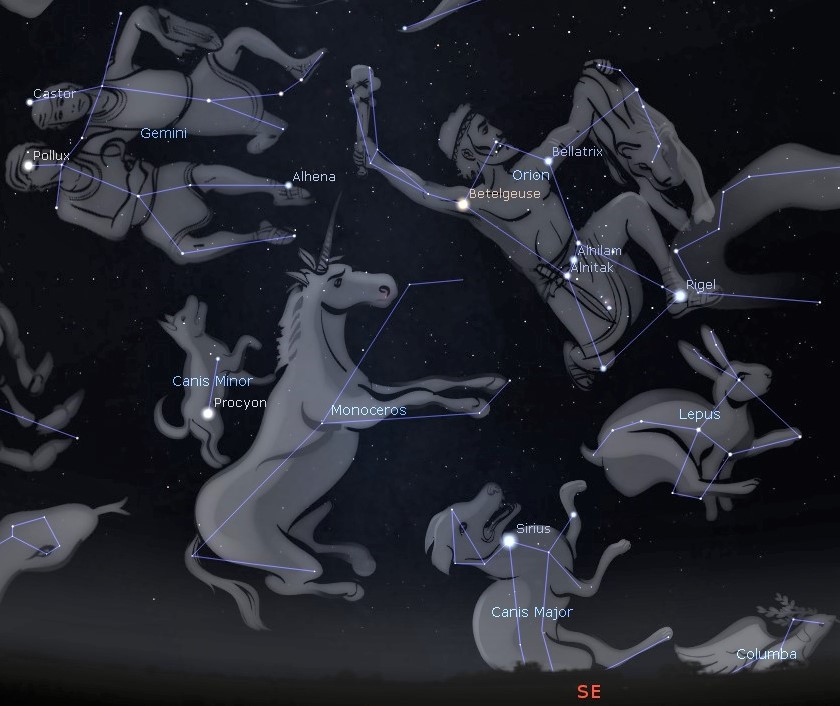This Week’s Sky at a Glance, 2020 November 14 – 21
~by Curt Nason
Orion can be seen getting out of bed around 8 pm now, preparing for a night of hunting. Being a giant and very old, it takes an hour and a half for his hourglass shape to clear the horizon. He rises on his side and stands upright when he is in the south. The celestial equator, an imaginary line in the sky directly above our equator, runs very near Mintaka, the star at the right of Orion’s Belt. Therefore, Mintaka rises due east. Notice how huge Orion appears as he rises, bigger than he appears a few hours later in the southeast. This is the same optical illusion that makes the Moon appear larger when it is rising or setting. The twins Castor and Pollux of the constellation Gemini rise on their side at the same time as Orion, just to his left.
If you are into genealogy, Orion, as a son of Poseidon, is a cousin to Pollux, a son of Zeus. Castor had the same mother as Pollux but a mortal father. Genealogy is more complicated when immortals are involved.
This Week in the Solar System
Saturday’s sunrise in Moncton is at 7:19 am and sunset will occur at 4:47 pm, giving 9 hours, 28 minutes of daylight (7:21 am and 4:55 pm in Saint John). Next Saturday the Sun will rise at 7:28 am and set at 4:40 pm, giving 9 hours, 12 minutes of daylight (7:31 am and 4:48 pm in Saint John).
The Moon is new on Sunday, passing below Jupiter and Saturn on Thursday and reaching first quarter after midnight next Saturday night. Jupiter and Saturn are in good position for early evening observing, while Mars resumes its eastern motion against the stars at the beginning of the week. Mercury remains a naked-eye object within 15 degrees to the lower left of Venus throughout the week. Comet C/2020 M3 ATLAS is a potential target for binoculars or small telescopes at late evening this weekend, near Orion’s “other” shoulder star, Bellatrix, above of his three-star belt. The Leonid meteor shower might add of few shooting stars for viewers over Tuesday night to Wednesday morning.
With astronomy meetings and outreach activities on hold, you can watch the local Sunday Night Astronomy Show at 8 pm and view archived shows.
Questions? Contact Curt Nason.

